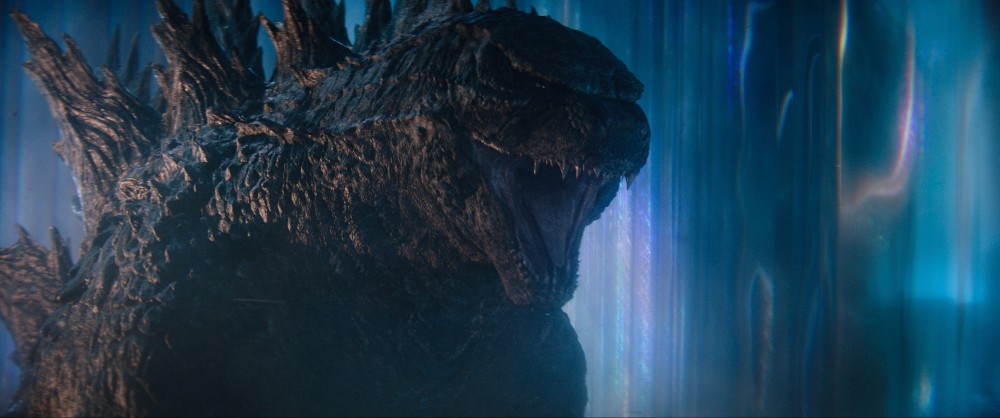
At this point, all ten episodes of Monarch: Legacy of Monsters, are available to stream on Apple TV+, and people have a much better idea of what a series set in the world of Legendary Pictures “Titans-verse” and centered around the 2014 Godzilla movie and subsequent films might look like.
Granted, Monarch is more about the origins of the titular government organization meant to keep track of all the Titans and there whereabouts, but that doesn’t mean it doesn’t have its share of giant monsters most will be tuning in to root for.
Of course, when you’re making any movie or television series based around giant monsters like Godzilla and others, visual effects are going to play a key role, which is why Sean Konrad was the perfect person for VRX Supervisor for Monarch. After all, Konrad had already worked on two of the previous movies produced by Legendary and had all the contacts and relationships necessary to keep the Titans consistent with the movies.
Below the Line spoke to Konrad a few months back, just a few episodes into the season, getting into some of the specific Titans introduced on the show and other VFX necessary to create some of the incredible sequences.
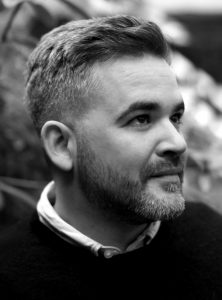
Below the Line: How exactly did you get started in the VFX business?
Sean Konrad: My brother started a visual effects company out in Winnipeg, Manitoba, when I was 14. I started helping out, and I ended up doing some stuff at a software company in Toronto for a bit and hated it. So it was like, “Okay, I’m just gonna go back to what my summer job was and went out to Vancouver,” and then I’ve been kind of bouncing around quite a bit since then.
BTL: I think I saw you were at MPC for a while. Had you been at one of the specific vendors until very recently?
Konrad: I was at MPC for over five years, and then I was at Method Studios for just over six. I left as that studio in Vancouver was turning into Framestore at the time. I’ve been part of Legendary for the last two years – this project has been going for two years.
BTL: I know you did some work on Godzilla and were a supe for King of the Monsters.
Konrad: I was an artist on Godzilla 2014 at MPC, so we did majority of the Godzilla scenes in that movie, and then worked at Method Studios as a secondary supe on King of the Monsters, just on the vendor side working on the larval Mothra scene mostly, and then, at Method Studios, I worked there for quite a few years. My last project there was Ms. Marvel.
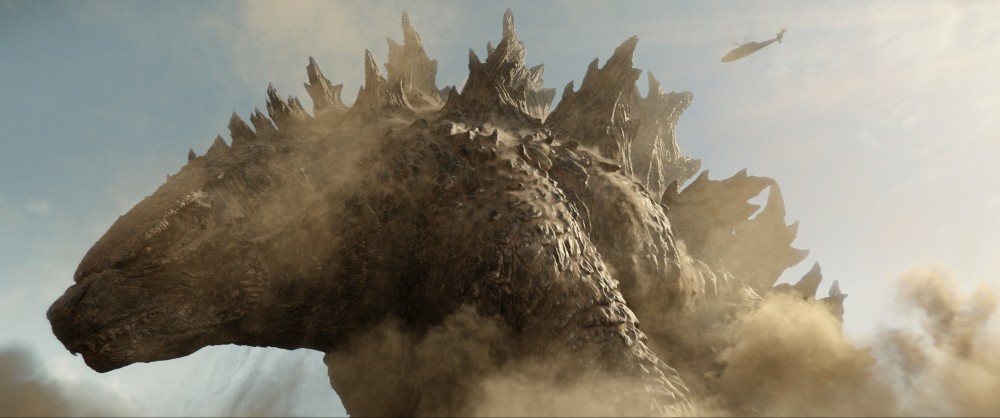
BTL: Obviously, there are direct connections between Monarch with the 2014 Godzilla. Was that one of the first thing you knew you’d have to recreate? Were you able to use some of the assets from the other movies or not for Godzilla?
Konrad: The 2014 scene, there’s a lot of moving pieces for it. I ended up placing that work back with MPC, just so that we had some continuity with it. Anybody can recreate old assets at this point. Godzilla, as an asset, that’s Legendary’s property; it sits in a vault. Whenever you need to pull it out of the vault, you can pull it out. The version that’s in Godzilla 2014 is different than the version that’s in King of the Monsters. The dorsal fins have some changes on them.
The way that they calculate lighting and shading has changed from 2014 to contemporary, so they had to rebuild all the shaders for Godzilla to make sure it matches. The Golden Gate Bridge asset, a lot of that stuff came over a little bit more easily. One of the things that was really important was they have the tank asset, it’s only in one shot in our show, but we wanted to make sure that we had all the same tank assets, the same taxis, all the stuff they had populated on the bridge, to make sure we had some sort of continuity.
BTL: Otherwise, how do you decide how to parse out shots to different vendors? I assume you had a lot of different vendors on this show?
Konrad: Yeah, we had 15 different vendors on the show. For Godzilla himself, four different vendors worked on the Godzilla asset in different scenes, and a lot of it was scene-dependent. That 2014 scene went to MPC. We have another scene that happens in the ’50s with the Bikini Atoll, and that uses the same version of that asset. I gave that to RSP, a company in Australia, and the reason I gave it to them was they’re really good with water. And then, Rodeo has a scene in Episode Six later on, where there’s a really huge effects component to it, so there’s a lot of smoke simulation, rigid body destruction stuff happening.
They made a lot of sense for it. The supervisor at that studio had worked on all the old movies, so I knew he could bring things together in a capable way. Weta has a big chunk with Godzilla, as well, for the third act, and one of the things that Weta is really well known for being able to take these really challenging third acts and put them together under difficult timelines.
BTL: I know they shot a lot of the show in Vancouver, though not the whole thing, so were you generally on set the whole time or are you working with a team on set as they shoot?
Konrad: It’s an interesting one, because we shot in Vancouver, we shot in Tokyo, we shot in Hawaii. My personal role, I went to set whenever I could, but we were shooting two units, and then scouting another. I was also turning over work to vendors, and then doing post-vis and editorial and all of these things. I would typically spend about half my day in the office and then half my day on sets. If it was a more critical visual effects sequence, then I would be on-set the entire time. Thank goodness for 5G and Wi-Fi.
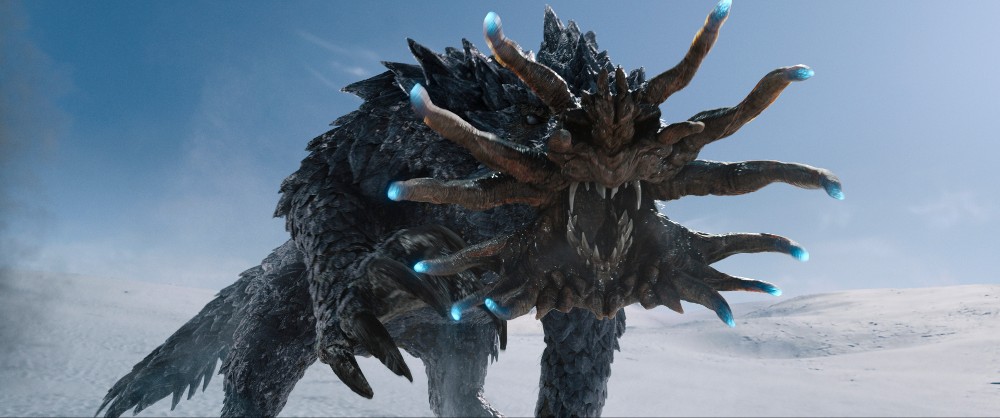
BTL: I don’t know some of the names of the new Titans. I think Episodes 4 and 5 have a new Titan that’s pretty dominant. Do you have to involved very early on with the designers to figure out the movement and animation of that creature?
Konrad: That creature is called the “Frost Vark,” kind of like “aardvark” but “frost.” The design process for that stuff, it really depends on what the creature is. Sometimes, you’ll have a really clear understanding of what the writers want, and then sometimes you’ll have a very vague idea, and it will be situational.
The creature in the beginning of Episode One, the crab monster that comes out of the ground, that was entirely down to… we were standing on this landscape, we had this entire opening scene written, and we just couldn’t find a location that made any sense for it. We’d have had to fly to Hawaii and put up blue screen everywhere. It just didn’t really make a lot of sense, so [director] Matt Shakman was like, “Well, looking at this ground, why don’t we just do a crab, and there’s all these crabs on this landscape? Why don’t we do this giant crab monster that has its back based around this amazing volcanic rock that we’re standing on?” That was really organic, designed around the area. We gave that design to Weta’s dev concepting group.
And then, for the Frost Vark, it was a lot more straightforward. Matt Fraction had been wanting to do this idea of a star-nosed mole mixed with a pangolin with icy features. Early on, you get that concept, you try a whole bunch of different designs, and you put it in. You start seeing it moving, and that forces you to pivot a little bit, because you design something that looks really good on a page as a concept image, and then once you put into a shot, it doesn’t necessarily work.
A lot of it comes down to how those scenes are choreographed and what parts of the creature you’re seeing in those situations. One of the big changes after we got through post-vis. You do pre-vis on the scene where you take the storyboards, you do a really rough animatic, you look at what coverage you’re missing, so that you can then go in and make sure that you have that coverage from a filming point of view. You do post-vis afterwards, where you take that rough animation, you slot it into the background, and you look at how it’s working. That way, people can look at the edits, they can give notes, you don’t get too far down the line without it going off the rails.
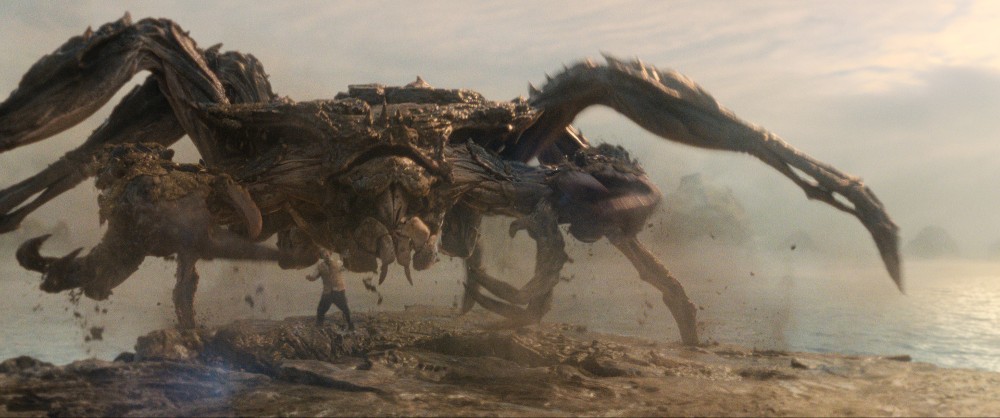
We looked at it, and the general consensus was that the creature wasn’t scary enough. We had this idea of this blind creature, no visible face, and with the coverage we have, with the time we have, it’s not selling this idea of this scary monster. It was a little bit lumbering and slow, so we completely rethought it.
We gave it this really big, scary face, we sped up its movements, we made it constantly aggressive. So every single shot characterizes it as being angry, hungry, aggressive, and that completely changed how that character read between what we had on the page to what we ended up with in final.
BTL: What are the actors reacting to on-set, especially in an episode like that where there’s so much destruction and other stuff going on?
Konrad: Half that scene, all the stuff in the daytime, we shot on an actual glacier, so we had really limited resources of what we could bring up there. A lot of it really just comes down to the pre-vis, and they’re able to look at what their scenes are, what their eyelines will be and what their reactions will be. And then, the actors are playing off that.
If we really need a very specific eyeline, then we’ll use a painter’s pole with a tennis ball. We had an app that was sort of hard to use, so we didn’t use it very often, but we had an app where we could scan a set, and there are LIDAR scanners on the most recent iPads, so you can basically scan the set, and then press a button, and you can drop the creature in. That wasn’t very useful for lining up shots, but it started giving the camera ops and the DoP some idea of, “Oh my god, this thing is huge! So we need to pull the camera back, pull our actors back a bit if we want it in a specific spot.”
BTL: I’m sure a lot of the questions you get are really focused on the Titans, but there’s so much more VFX involved with a series like this. Were there a lot of set extensions? Like you talk about shooting on a glacier, which looks amazing, but I imagine you’d still have to build it out and hide things.
Konrad: The glacier was awesome to shoot at, we got so much out of it. The problem is you can’t shoot there at night, because it becomes really unsafe to fly. We had scenes shot at dusk, and the dusk window up on the glacier is about 30 minutes. If you have three pages of dialogue, you’re never gonna get that done with any amount of coverage in 30 minutes. We take a lot of those things back to the stage. We talked about doing a volume, but a lot of what you need to do a volume successfully is a lot of lead time, and we weren’t sure exactly what the location was going to be where we’re shooting our practical scenes.
We didn’t really know until like two weeks before we scouted the location, and we said, “Okay, we want to shoot here.” You get up to the glacier and then suddenly, five feet of snow is melted, and you can’t shoot in that spot anymore, because it’s unsafe shooting, and the snow behind the characters would have changed versus what we would have built for a volume. All of that means we didn’t end up shooting with a volume. We shot a lot of blue screens.
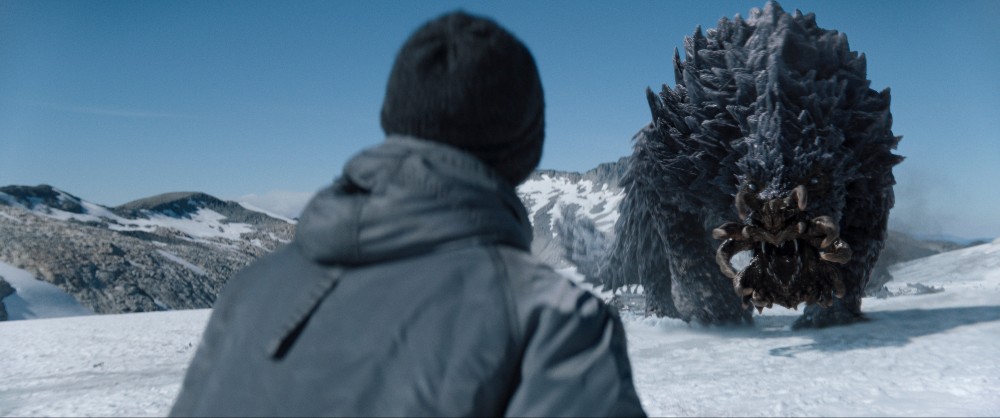
It was really challenging to figure out how do you light that for a night scene to give it the scope you want? In Episode Four, the masks in the gallery were entirely CG. Originally, we planned to shoot those as a real physical thing, but the concept just wasn’t working. What was written on the page, the art department did an execution of that. There are all these technical problems with how that stuff was being done, so we totally rethought it.
Matt Fraction had this different idea for something. Originally, these were physical masks suspended from the ceiling on cables tying into Japanese Noh theater stuff. There wasn’t really that much connective tissue in the script to that idea, so fraction was just like, “Let’s play with some of the other thematic things going on with Kintaro, and make it feel more coherent with the rest of the artwork he does, which is very digital-feeling.” We started thinking about these sculptures as being these polygonal structures that when you project onto the different parts of the polygon, the face will start to feel like an amalgamation of different faces. It allowed us a lot of like freedom in the edit to change timing of what those faces were doing, to have that be resonant with what the scene was doing.
BTL: Did you ever use a volume at all, maybe later in the season or not at all?
Konrad: We shot some stuff with driving plates, where we had a little bit more time to shoot the driving plates, backgrounds. Again, too many things were happening, and not enough lead time to really make a volume work. I love the results that you can get out of a volume, but you’re limited and you usually can only shoot one camera. I’m friends with a lot of the people who did The Mandalorian Season One. They talked about the lead time they had on that, and the lead time that they now have in the current ones, and then you look at the breakdown reels of Image Engine, and they’ve replaced 90% of what’s in the volume anyway.
You still get something out of it, because you get this more naturalistic lighting. If you light things well, then you don’t get that benefit. It’s sort of like stuff like the plutonium plant was a scene where we probably could have shot that on a volume, but then if we suddenly had to replace everything, you’re rotoing black hair off a black background and then trying to put dust and other things in behind. It would have become too logistically difficult to do. It is a thing that I would like to figure out how to work with in the future, but just our timelines on this show and this season, it just didn’t make any sense.
BTL: VFX have been in the news a lot lately, both good and bad. There was talk about how the pipeline slowed down and got stalled due to COVID, even though everyone has been working just as hard, and getting things done. Do you feel that in the three-plus years since COVID, you’ve still been able to get things done and turned in when they need to get done?
Konrad: I think part of what we do when we assign the work is we make sure that we have people who can do the work on the timeline that we need. Visual effects need as straight a runway as possible, and a lot of times, my experience has been working on – I won’t say what – but working on other properties, there is a lot of circuitous navigation happening, rather than just the straight path.
What you want is from what you shoot to what you produce, you want to make as few deviations as possible, and those deviations always happen. Sometimes, you’ll have stuff like a creature whose face fundamentally is not scary, so you have to change. But if you’re suddenly changing the edit, doing six weeks of reshoots, it puts an enormous amount of stress on the resources that you have, and then that burns people out. A show might realistically need three weeks, four weeks overtime to get something done, and then you put too many changes in, and then suddenly, you need to run 14 weeks, 20 weeks, 26 weeks.
There were a couple of projects I worked on, where I was working 80-hour workweeks for months at a time. When you get to that point, you’re just creatively dead. [chuckles] There were definitely big challenges on this show, but one of the things that was nice, is that we have a much more linear path than a lot of projects that I was on. This is especially important for an episodic. We had a really good timeline on this project. We had a decent budget, we had a lot of things going for us, but if we had had to change tack every 15 days with some new idea or some third act concern, we would have never finished in that timeline, and that would have really been a difficult situation.
All ten episodes of Monarch: Legacy of Monsters can now be steamed on Apple TV+.





